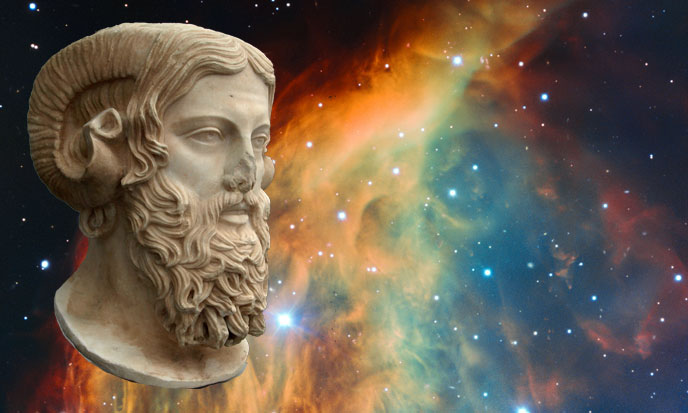
Ghurka suddenly appeared in his powerful vimana and destroyed the three cities of the Vrishis and Andhakas with a single projectile charged with all the Power of the Universe. An incandescent column of smoke and flames as bright as ten thousand suns rose in all its splendor.
It was an unknown weapon, an iron thunderbolt, a messenger of death which reduced to ashes the entire race of Vrishis and Andhakas. The corpses were so burned that they were unrecognizable. Their hair and nails were falling down; the pottery broke for no apparent reason and the birds turned white. After a few hours, all food was infected … To escape this fire, soldiers threw themselves into rivers to wash their bodies and their equipment …” No need to be atomic engineer to know what’s up. These lines made the exact description of a nuclear irradiation, what excludes the chance of a fairy tale.
It is highly unlikely that, describing a purely imaginary weapon, the author of Mahabharata listed the very real effects of a nuke bomb. Therefore we must conclude, whether we like it or not, that nuclear technology is not a modern invention.
Of course, the present science does not admit that a prehistoric culture has used UFOs to drop nuke bombs, although there is very convincing evidence. In Pakistan and in India, in the Indus Valley, lie the ruins of several ancient cities, which were brutally destroyed. They are not mentioned in history: we can conclude they are prior to historical times. They are suspected to be some of the Rishi cities of the mythical empire of Rama. The two largest ones are called nowadays Mohenjo-Daro and Harappa, but we ignore their names at their flourishing time.
Each of them could give accomodations to 200,000 inhabitants.
Could they be the cities of Vrishis and Andhakas, these three cities destroyed by Ghurka and his iron thunderbolt? However, it seems that these cities have been destroyed instantly: on the road, excavations allowed to discover skeletons striked during their working activity.
After several millenia, these skeletons are still as radioactive as those in Hiroshima. This high radioactivity rate caused serious health problems, so serious that the Indian government finally closed the site for further investigations.
Another argument reinforces the hypothesis of atomic wars in the distant past. This is the cave episode, during the last Ice Age, when humans have turned into moles for some three thousand generations.
This episode is not fictional, it is actually part of our heritage, which is why the theme of burial is so present in the popular literature: The Twelve Monkeys, Journey to the Center of the Earth, The Hollow Earth…
Very often, thinking imagine a possible future, the authors will catch a slice of pre-ancient history in the Akashic records… database of everything that we experienced during our endless history.
Those of them who make it in conscience have this precious gift called “infused science”. It is such a pleasure to explore the distant past of our fellows. We must besides retouch the picture that these war quotes give us of Shiva.
Because there have been several Shiva.
He who possesses Pasupata, the ultimate weapon, is one of the princes of the Atlantean era, one of the former gods, ancient astronauts and geneticists, creators of Hanuman and other hybrid gods.
This one is not the great Shiva, original principle of Dravidian Shivaism. For Shiva the Source, impersonal and transcendent principle, can in no way be confused with the guardian of an atomic bomb, which is only a human homonym. In France, ElieElijah firstnames are numerous. Jesus firstnames are also numerous in Latin America …
Who can confuse any French Elie with the god of the Bible or Madonna with Virgin Mary?

Similarly we will be careful not to confuse the Hinduism of Ram or Rama, of European importation, with Dravidian Shivaism coming from another primordial continent, Gondwana, which included India, Africa and Antarctica.
There are two distinct origins for hinduism. Derived from a white Atlantean Trinitarian religion, Rama Hinduism begins in the fifth millennium BCE, while the black Dravidian Shivaism, religion of the One, is much older.


